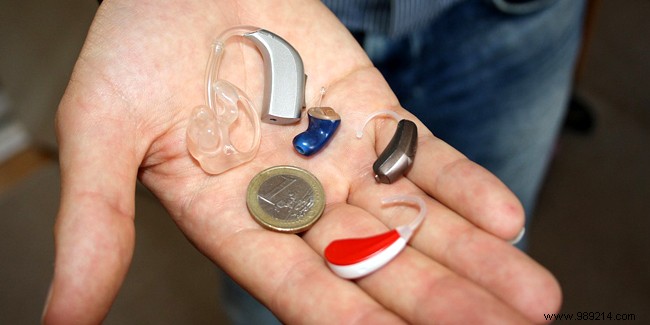
With age, hearing ability tends to decline. In France, nearly eight million people report suffering from hearing loss. Some sounds become inaudible and contribute to handicapping people who experience these hearing losses. Fortunately, high-performance and discreet hearing aids can help and relieve seniors who experience these problems
These devices adapt to the hearing problems of each person through different technologies, in particular by eliminating parasitic noises which interfere with the proper understanding of external sounds and by amplifying those allowing better general hearing.
The primary function of a hearing aid is to capture sounds to process them so that they become audible to the person with this device. It constitutes a bridge between the sound environment and the person who has lost hearing abilities. The hearing aid operates using small batteries whose size varies according to the size of the device. The hearing aid is made up of several components:
Hearing aids have seen great technological advancements in recent years. Today they are veritable compendiums of high technology.
These hearing aids are the simplest. Their only role is to adjust the volume of the sounds they process and to regulate the intensity of the frequencies. Some of them have the ability, however, to soften loud sounds and increase quiet sounds.
Digital hearing aids have the characteristics of analog hearing aids with the added advantage of being equipped with a converter which transforms the sounds perceived into digital data using very advanced computer algorithms. This technology allows finer analysis and processing of sounds to then be reproduced in a very personalized way according to the hearing problems of the wearer of the hearing aid.
These hearing aids are adjustable and programmable using specific mobile applications. From a smartphone, it is possible to define yourself in real time the most suitable settings of your hearing aid according to the place and the environment. Some of these connected devices also allow you to receive calls from your mobile phone directly in the hearing aids, as well as to listen to music stored on a smartphone.
Interaurality is a technology that allows hearing aids to communicate from one ear to the other. This technique analyzes the whole sound environment of the person at 360° and contributes to an optimal and clear understanding of the words in particular, but also of the surrounding noises.
The purpose of this technology is to increase the well-being of users of hearing aids and to improve performance in use. With wireless connectivity, a hearing aid can be easily connected to a television or a connected speaker, for example, so that their sound passes directly into the hearing aid to be received as best as possible by the ear of the wearer.